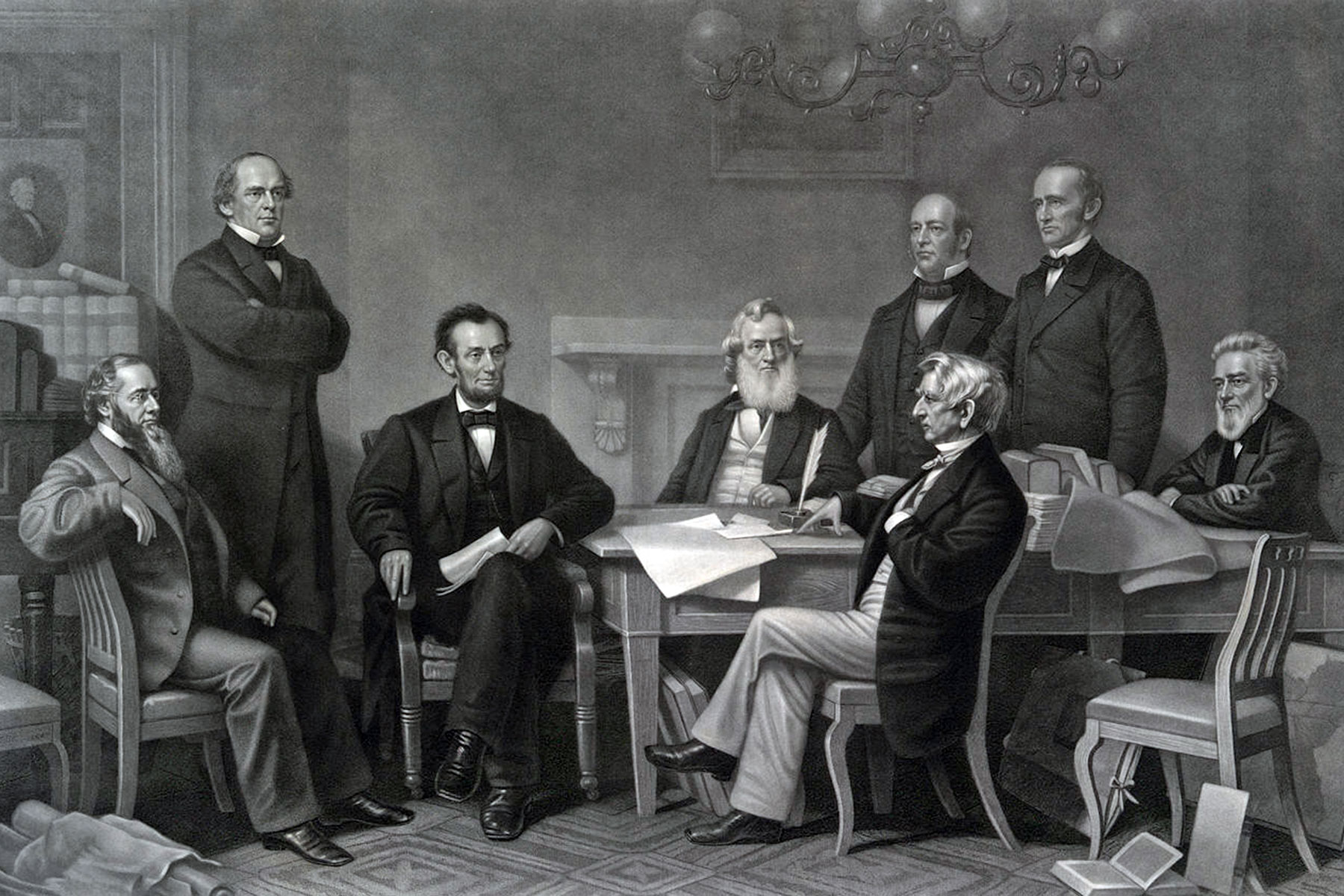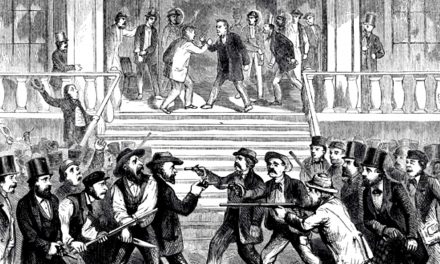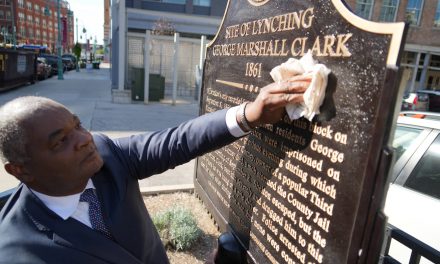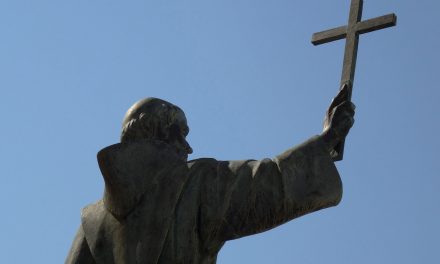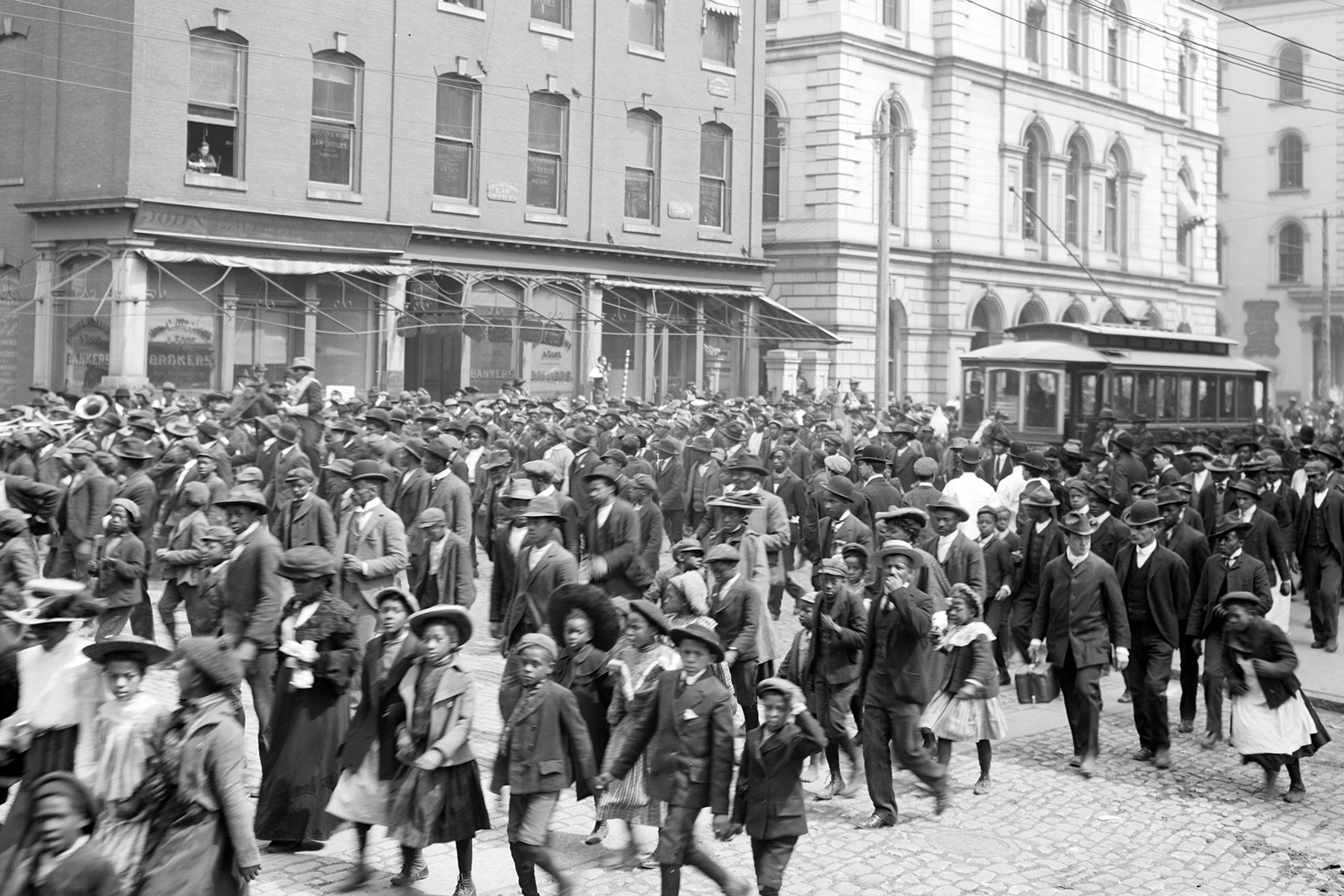
Black people in Milwaukee and across the country will celebrate Juneteenth Day on June 19th. The day is a commemoration of the date in 1865 when the enslaved population of Galveston, Texas was notified of the Emancipation Proclamation, issued two and a half years earlier by President Abraham Lincoln. It has been called Freedom Day by some and is a legally recognized state holiday or day of commemoration in all but five states.
On Juneteenth Day 1988, James Cameron opened America’s Black Holocaust Museum in Milwaukee. He chose that date specifically because of its importance to blacks. We will celebrate the 30th anniversary of the founding of the museum in the newly built future home of the museum on Juneteenth Day.
There is a backstory to the date that most people are unaware of. Even though the date was seen as Emancipation Day by those in Galveston, Confederate citizens and soldiers were well aware of Lincoln’s famous Emancipation Proclamation issued January 1, 1863. The Emancipation Proclamation was an executive order issued by Lincoln that many point to as his emancipation of blacks enslaved across the country.
Unfortunately, that is not exactly what happened. Most of us learned about the Emancipation Proclamation in school. I grew up hearing Lincoln being referred to as the “Great Emancipator.” The reality is much more complicated than this narrative. Those Southern whites that continued to keep news of Lincoln’s proclamation of freedom a secret wanted to maintain control of the narrative about the freedom of enslaved blacks.
They were successful in keeping this secret until Union General Gordon Granger and his troops arrived to give the news to blacks on June 19, 1865. Confederate General Robert E. Lee had surrendered his Army of Northern Virginia to Union General Ulysses S. Grant at Appomattox Court House nearly two months earlier, on April 9th.
Many southern troops continued fighting after Lee surrendered. Grant had written a letter to Lee on April 7 stating, “The result of last week must convince you of the hopelessness of further resistance on the part of the Army of Northern Virginia in this struggle. I feel that it is so, and regard it as my duty to shift from myself any further effusion of blood, by asking of you the surrender of that portion of the C.S. Army known as the Army of Northern Virginia.”
Despite the surrender, then President Johnson did not declare the war officially over until August 20, 1866 as Confederate units continued sporadic fighting for over a year after Lee’s surrender. On that date he issued a proclamation announcing the war finally over.
“And I do further proclaim that the said insurrection is at an end and that peace, order, tranquility, and civil authority now exists in and throughout the whole of the United States of America.”
Granger’s troops arrived in Galveston with news of the Emancipation Proclamation by reading General Order No. 3.
The people of Texas are informed that in accordance with a Proclamation from the Executive of the United States, all slaves are free. This involves an absolute equality of rights and rights of property between former masters and slaves, and the connection therefore existing between them becomes that between employer and free laborer.
The blacks celebrated it as Freedom Day. However, slavery was still legal until the ratification of the Thirteenth Amendment to the Constitution on December 6, 1865. Mississippi was the last state to ratify the amendment on February 7, 2013, exactly 148 years later.
There was a caveat in the amendment. Section One stated, “Neither slavery nor involuntary servitude, except as a punishment for crime whereof the party shall have been duly convicted, shall exist within the United States, or any place subject to their jurisdiction.”
That wording is what has allowed slavery to still remain a legal institution to this day.
The caveat allowed a new from of slavery to be implemented throughout the country as documented by Douglass Blackmon in his Pulitzer Prize winning book “Slavery By Another Name,” that PBS made into a documentary by the same name in 2012. This is a hidden part of the narrative about slavery that is unknown to most Americans. This narrative about Lincoln as Great Emancipator and the Thirteenth Amendment ending slavery goes even deeper.
I always told guests at America’s Black Holocaust Museum to read the Emancipation Proclamation instead of reading about it. Most would be shocked to learn what is in the famous document. At the time of the proclamation, eleven slaving states were in open rebellion against the United States government. Thirteen of the fifteen states maintaining slavery prior to the war drew up Ordinances of Secession beginning with South Carolina on December 20, 1860. Missouri and Kentucky were the last states to do so on October 31, 1861 and November 20, 1861 respectively. Maryland and Delaware never drew up Secession documents. Despite Pro-Confederate governments in Missouri and Kentucky adopting Ordinances of Secession they remained in the Union during the Civil War.
By 1863, the states of Missouri, Delaware, Kentucky, Maryland, and West Virginia were known as the Border States. They maintained slavery for a significant amount of time after the Emancipation Proclamation. Maryland abolished slavery in 1864, Missouri, Tennessee, and West Virginia did so in 1865, prior to the ratification of the Thirteenth Amendment. Both Delaware and Kentucky waited for the ratification of the amendment on December 6, 1865 to abolish slavery.
According to what is generally taught in our history classes, the proclamation declared, “that all persons held as slaves” within the rebellious states “are, and henceforward shall be free.” A careful reading of the Emancipation Proclamation shows Lincoln’s document to not be as far reaching as we have been led to believe.
Now, therefore I, Abraham Lincoln, President of the United States, by virtue of the power in me vested as Commander-in-Chief, of the Army and Navy of the United States in time of actual armed rebellion against the authority and government of the United States, and as a fit and necessary war measure for suppressing said rebellion, do, on this first day of January, in the year of our Lord one thousand eight hundred and sixty-three, and in accordance with my purpose so to do publicly proclaimed for the full period of one hundred days, from the day first above mentioned, order and designate as the States and parts of States wherein the people thereof respectively, are this day in rebellion against the United States, the following, to wit:
Arkansas, Texas, Louisiana, (except the Parishes of St. Bernard, Plaquemines, Jefferson, St. John, St. Charles, St. James Ascension, Assumption, Terrebonne, Lafourche, St. Mary, St. Martin, and Orleans, including the City of New Orleans) Mississippi, Alabama, Florida, Georgia, South Carolina, North Carolina, and Virginia, (except the forty-eight counties designated as West Virginia, and also the counties of Berkley, Accomac, Northampton, Elizabeth City, York, Princess Ann, and Norfolk, including the cities of Norfolk and Portsmouth), and which excepted parts, are for the present, left precisely as if this proclamation were not issued.
There are several facts in the document that we are not taught. The first glaring omission is the state of Tennessee, which was clearly in rebellion and a part of the Confederate States of America. President Lincoln exempted Tennessee, large portions of Louisiana, West Virginia, as well as the loyal Border States of Missouri, Kentucky, Maryland and Delaware from the mandates of “freedom.”
1860 Census Bureau records show that over one fifth of all enslaved blacks lived in the places where the Emancipation Proclamation did not apply. As a war measure, true freedom depended on the Union Army maintaining military control of the areas covered by the proclamation. It is clear that they did not maintain control in all of these areas during the remainder of the war.
Why is it that the narrative of the Emancipation Proclamation varies so much from the terms listed in the document itself? We have been taught that Lincoln is the Great Emancipator and the facts make that designation cloudy and somewhat dubious. Obviously Lincoln intended to free those enslaved in the Confederate states, but those states saw themselves as independent and under no responsibility to listen to or follow the dictates of President Lincoln. Blacks in the places listed as free, flocked to Union Army lines to celebrate their freedom and to seek protection under this newly gained right.
Another important aspect of the narrative that is left out of our learning is Lincoln’s attempts to colonize freed blacks outside the borders of the United States. African American historian Charles H. Wesley studied Lincoln’s colonization plans and wrote about them in the January 1919 Journal of Negro History. Following the ideas expressed first by the American Colonization Society (ACS) in 1816, Lincoln intended on forcing freed blacks to leave the country of their birth.
Free blacks and those recently manumitted were a cause of concern to the leaders of the slaving states. They proposed sending them to West Africa. James Madison and Henry Clay both served as presidents of the organization. James Monroe also supported the effort. Many prominent blacks such as David Walker referred to this as a racist attempt to dismiss blacks from the land that they themselves had built with their free labor.
Thomas Jefferson, who supported the ACS, spoke of colonization in a letter to Edward Coles in 1814 about colonizing blacks. “I have seen no proposition so expedient on the whole, as that as emancipation of those born after a given day, and of their education and expatriation after a given age.”
Liberia, a colony set up by the United States government, was to be the place they were sent. The plan was supported financially by several states and the federal government was in favor of the plan as well. The growth of profits from cotton after the creation of the cotton gin decreased support for the plan.
As friction grew over the slavery issue in the 1850s, many leading men in the country including Abraham Lincoln, supported the colonization of blacks. Lincoln quoted the words of Henry Clay while delivering his eulogy on July 15, 1862. “There is a moral fitness in the idea of returning to Africa her children, whose ancestors have been torn from her by the ruthless hand of fraud and violence.” Lincoln’s views on slavery and the enslaved blacks in the country are too often separated. He hated slavery for sure but felt no love for black people.
Lincoln was a proponent of what would later be called Jim Crow segregation and separation of the races. His paternalistic and racists views were expressed openly during his famous debates with Stephen Douglas in 1854.
“If all earthly power were given me, I should not know what to do as to the existing institution. My first impulse would be to free all the slaves and send them to Liberia – to their own native land. If they were all landed there in a day, they would all perish in the next ten days. What then? Free them all and keep them among us as underlings? Free them and make them politically and socially our equals. My own feelings will not admit of this, and if mine would, we well know that those of the great mass of whites will not.”
Several years later Lincoln gave clarity to his views about colonization of blacks by stating in a speech that “I have said that the separation of the races is the only perfect prevention of amalgamation. Such separation, if ever effected at all, must be effected by Colonization.” Amalgamation was a racist principle that purportedly proved that race mixing was detrimental to whites. This despite the fact that black women and girls were impregnated daily by lascivious white males.
As President Lincoln still spoke of the colonization of blacks, “to carry out the plan of colonization may involve the acquiring of territory, and also the appropriation of money.” The April 16, 1862 federal act abolishing slavery in the District of Columbia appropriated $100,000 for colonization of blacks residing in the District, as well as an additional $500,000 in July. The recommendation for developing a plan for colonization was supported by Congress.
Lincoln also proposed offering compensated emancipation to leaders of the Border States on July 16, 1862. “Room in South America for colonization can be obtained cheaply and in abundance, and when numbers shall be large enough to be company and encouragement to one another the freed people will not be so reluctant to go.” On August 14, 1862 he informed a group of the leading black men in the nation of his proposal. He told them his justification for moving blacks to Central America.
“You and we are different races. We have between us a broader difference than exist between almost any two races of man. Whether it is right or wrong I need not discuss, but this physical difference is a great disadvantage to us both as I think. Your race suffer very greatly, many of them, by living among us, while ours suffer from your presence. In a word we suffer on each side. If this is admitted it affords a reason we should be separated. It is exceedingly important that we have men at the beginning capable of thinking as white men and not those who have been systematically opposed.”
If this was not audacious enough, Lincoln in his Second Annual Message January 1, 1862 stated “I cannot make it better known than it already is, that I strongly favor colonization and yet I wish to say there is an objection urged against free colored persons remaining in the country which is largely imaginary, if not sometimes malicious.” He favored a colony at Chiriquí in northern Panama. Businessman Bernard Kock wrote Lincoln a letter in December of 1862 in which he proposed colonizing 5,000 blacks at $50 per head in Haiti. He was discovered to be a con man and the contract that had been signed with him was later cancelled.
A group of capitalist picked up from Kock and took a group of just over four hundred blacks in deplorable conditions onboard a ship headed to Haiti. Between twenty and thirty died. The Senate investigated the incident and on July 2, 1864 appropriations for the colonization plans were cancelled. Lincoln however, continued to push for colonization as late as April 1865 in a letter to General Benjamin F. Butler.
“I can hardly believe that the South and North can live in peace unless we get rid of the Negroes.”
Lincoln’s views were clear and he did not waiver on his plans to colonize blacks prior to his assassination. This narrative is the polar opposite of that which we are normally taught. I have always believed that we get information, as older people used to say, “straight from the horse’s mouth.” Lincoln spoke loudly and directly in public and in private of his disdain for black people.
In some instances after the Emancipation Proclamation, the Union Army troops ignored the pleas of the blacks that crossed Union lines and refused to accept that these blacks were free. Perception becomes reality. Due to the long-standing narratives of emancipation, the ending of slavery and Juneteenth Day celebrations, our perceptions have been twisted in a way that does not match the reality of life and freedom of these black people.
Those who control the narrative control our perceptions. Because we do so little to study the primary source materials in our K-12 educations, we know a different version of history than the facts support. This is not revisionist history. It is a reawakening and discovery of our understanding about the history we have been taught, and taught incorrectly.
As we continue to celebrate the liberation of slaves on Juneteenth Day, it is imperative that we know and teach the backstory to contextualize the issue. Control of the narrative about slavery requires honesty. These may be hard truths to swallow, but so are many others related to untruths that all of us learn regularly.

